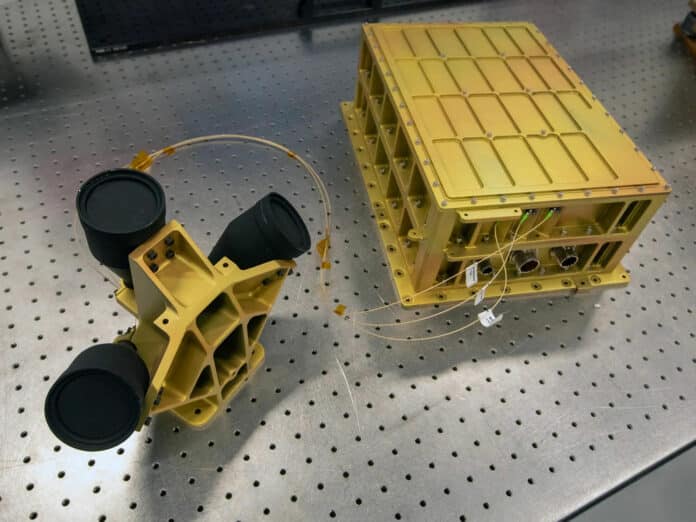NASA’s commercial lunar delivery services provider Intuitive Machines will launch its Nova-C lunar lander later this month, which will carry several NASA science and technology payloads, including the Navigation Doppler Lidar (NDL).
The Artemis mission will take humans back to the Moon, and Navigation Doppler Lidar will ensure a safe landing for everyone onboard. This cutting-edge guidance system, developed by NASA’s Langley Research Center, has the potential to revolutionize the way spacecraft are landed on extraterrestrial worlds.
The guidance system uses laser pulses to measure velocity and distance precisely. NASA will demonstrate NDL’s capabilities in the lunar environment during the IM-1 mission.
Although NDL is a NASA payload for this Intuitive Machines Commercial Lunar Payload Services (CLPS) delivery, it is not considered mission-critical for the successful landing of Nova-C, as Intuitive Machines has its own navigation and landing systems.
The story of NDL apparently dates back almost 20 years ago, when Dr. Farzin Amzajerdian, the project manager at NASA Langley then, made a remarkable discovery. He found a precise way to land rovers on Mars, which was a significant challenge back then due to several technical difficulties.
For instance, radar was not an effective solution for this purpose, as radio waves could not accurately cover all the necessary areas on the Martian surface. Consequently, smaller craters and boulders could remain undetected, posing unexpected hazards for landers.
“The landers needed the radar sensor to tell them how far they were off the ground and how fast they were moving so they could time their parachute deployment,” said Amzajerdian. “Too early or too late, the lander would miss its target or crash into the surface.”
Radio waves also couldn’t measure velocity and range independently of one another, which is important, according to Aram Gragossian, who joined the team about six years ago.
“Why not use a lidar instead of a radar?” he asked.
LiDAR (light detection and ranging) technology uses visible or infrared light, similar to how radar uses radio waves. LiDAR sends laser pulses to a target, which reflects some of that light back onto a detector. Thanks to the Doppler effect, LiDAR can measure velocity directly and precisely as it moves in relation to its target. Distance is measured based on the travel time of the light to the target and back.
Compared to radar, LiDAR offers several advantages, including the fact that a laser transmits a pencil beam of light, which can give a more precise and accurate measurement.
As NDL prepares to embark on its lunar mission, NASA is already working on a next-generation system. The team is developing a companion sensor to NDL, which is a multi-functional Flash Lidar camera that can survey the surrounding terrain even in complete darkness. When combined with NDL, Flash Lidar will allow you to go “anywhere, anytime.”
Other future versions of NDL could have uses outside the tricky business of landing on extraterrestrial surfaces. In fact, they may have uses in a very terrestrial setting, like helping self-driving cars navigate local streets and highways.
